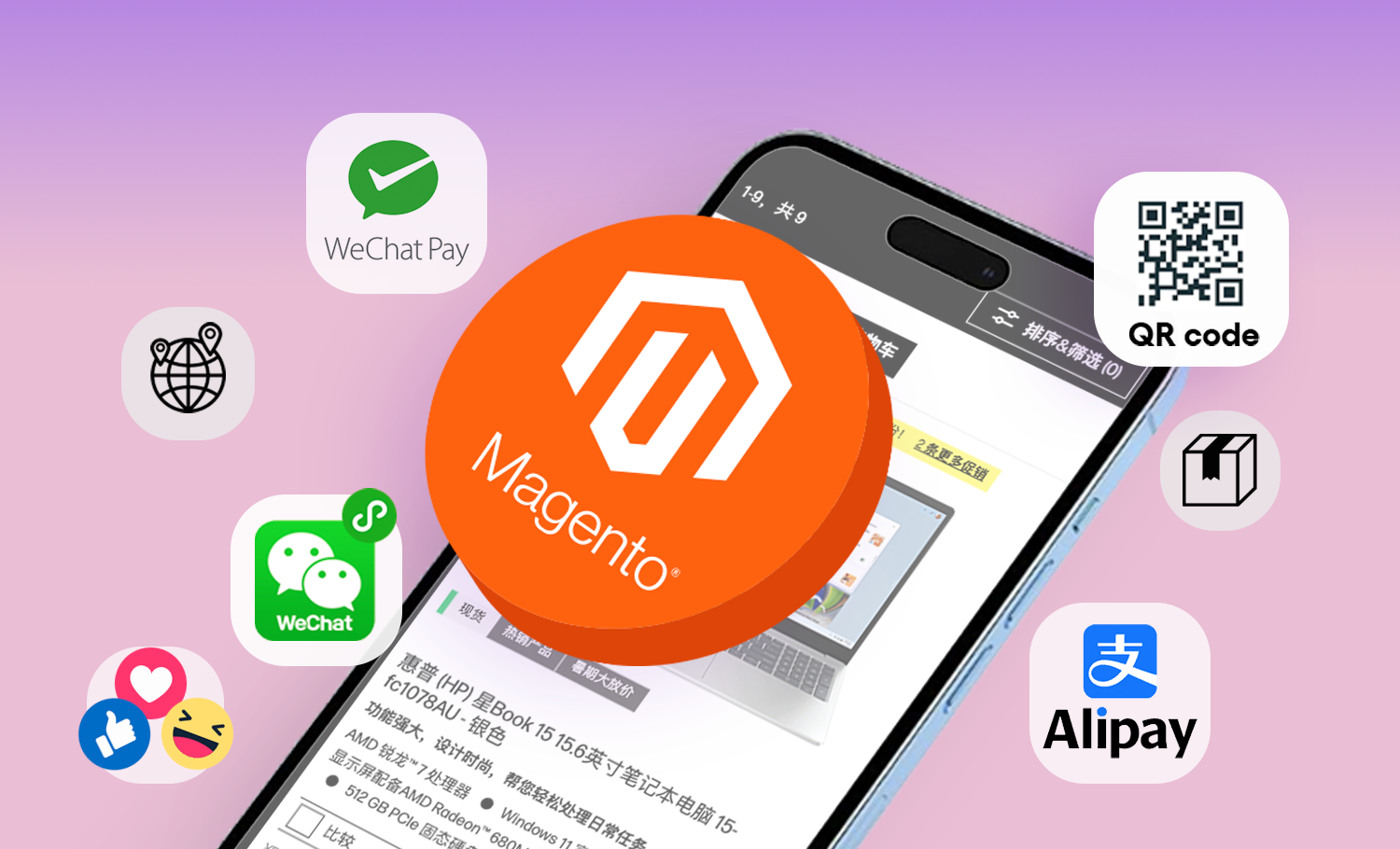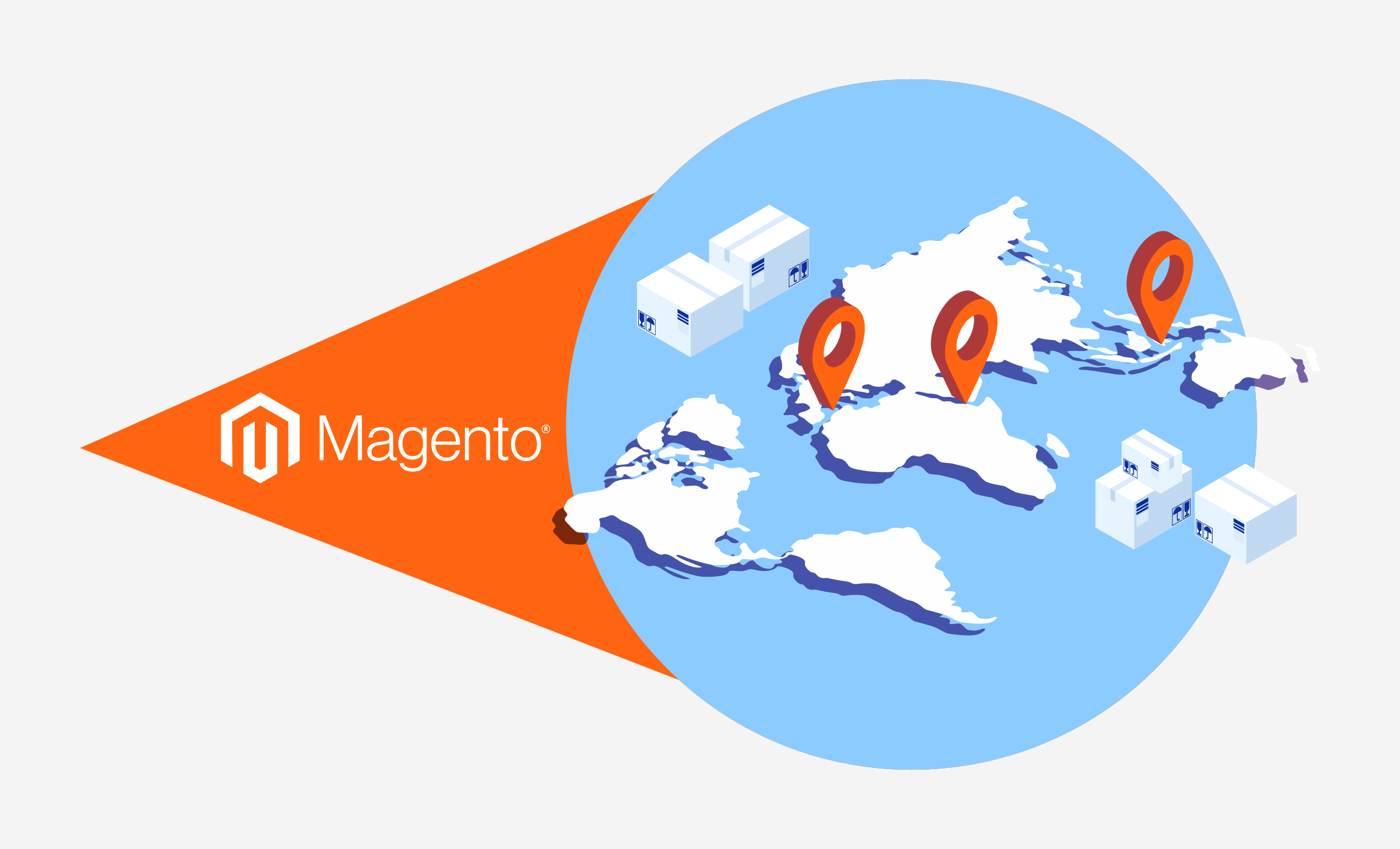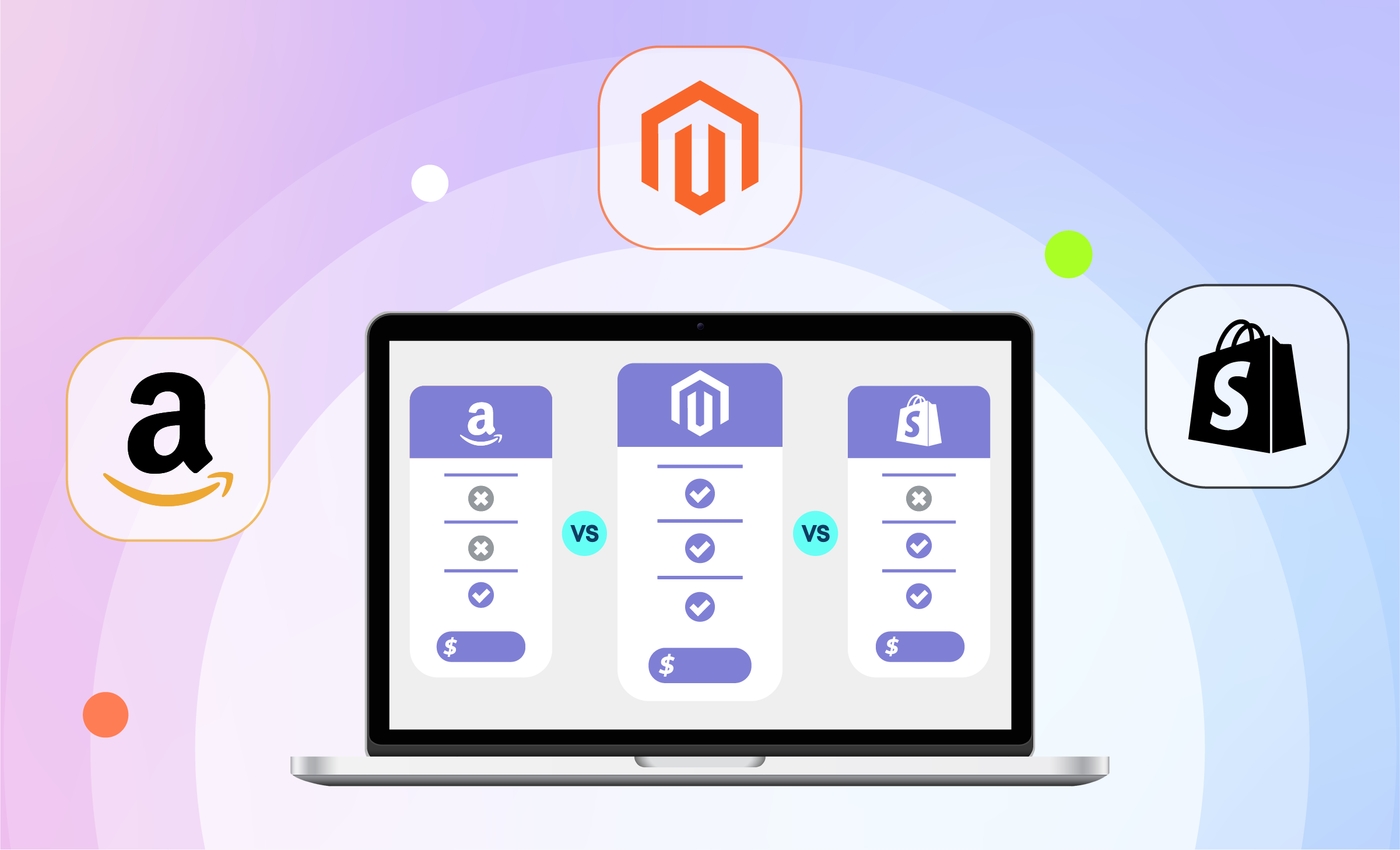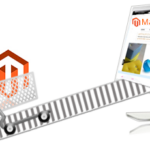Many well-known international brands have chosen to use Magento 2/Adobe Commerce to build their own eCommerce In China. Such a choice of platform for expansion of their business into the Chinese market, among other benefits, allows them to meet the unique demands and usage habits of Chinese consumers.
Adobe Commerce, the heir of Magento Commerce, which in turn was the enterprise version of Magento 2, is the market leader in eCommerce development technology. Adobe Commerce/Magento 2 provides a range of powerful features and tools to help companies quickly build efficient, scalable, customizable, and localized eCommerce platforms, allowing them to expand their overseas markets and sales channels quickly.
Thinking of choosing Adobe Commerce (Magento) for your eCommerce project? Check out our 2025 Buyer's Guide for Magento (Adobe Commerce): Costs, Features & AlternativesWe cover the ins and outs of Adobe Commerce (Magento) in order to help you make the best choice for your business, exploring key functionalities, use cases, and examples of successful implementations.2024 Buyer's Guide covering costs, alternatives, and use cases!
In this article we will look at 10 brands that have built websites using Adobe Commerce/Magento 2 in China! We made this selection and ranked it based on brands’ global visibility, and also the size of the consumer base in the Chinese market. The monthly traffic numbers come from SimilarWeb's January to March 2023 update.
1. Microsoft (Magento 2)
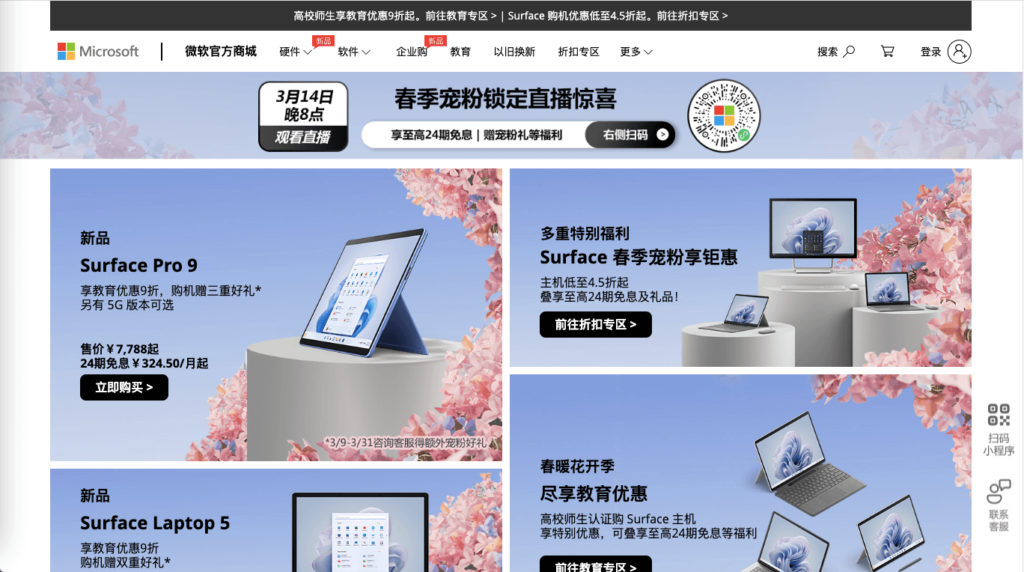
Monthly traffic: about 900,000
Microsoft is a multinational technology company headquartered in the United States. Its official online store in China, built on Magento 2, offers sales and support for various Microsoft products and services, including operating systems, office software, surface tablets, cloud services, and more.
Omnichannel strategy
On top of the responsive design, allowing design to cater to both desktop and mobile users, Microsoft China interacts with customers through WeChat mini-programs, live streaming, and other activities, providing consistent customer experience and products across channels.
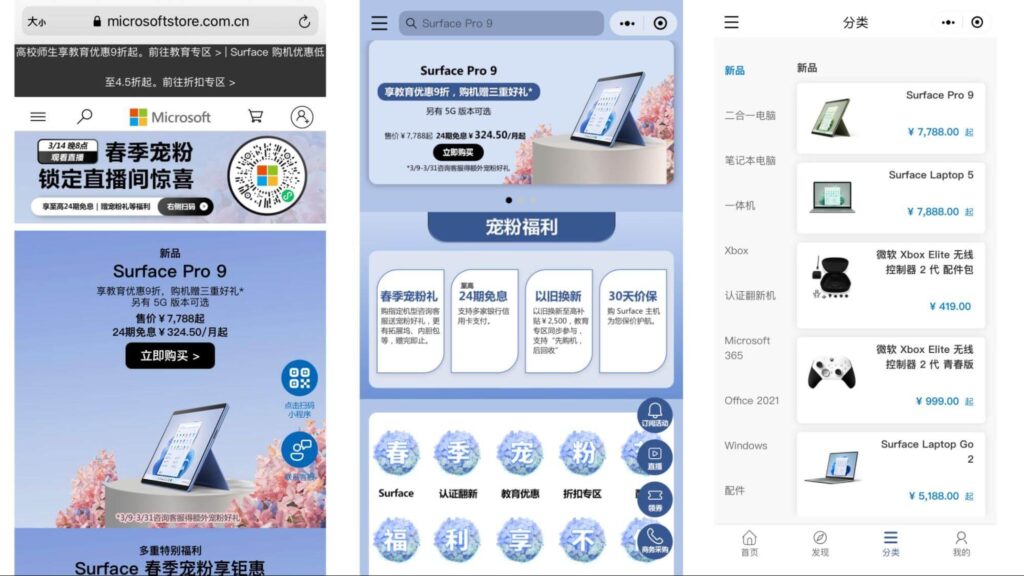
Special Features
- Special promotions such as education discounts, interest-free installment payments, and 30-day price guarantees
- Shopping section for corporate customers (B2B), providing exclusive service
- Mobile dynamic verification code login, social login (WeChat)
- Local social media marketing: WeChat official account, WeChat mini-program, Weibo
- Integration with local logistics such as SF Express and EMS, supporting 60-day return and exchange policies
- 24-hour online customer service
- Localized payment methods - UnionPay, WeChat Pay, Alipay
UI/UX Highlights
- Clear classification and search functions.
- The navigation bar is sticky to the top, allowing users to access important pages and functions of the website quickly.
- Adding a floating sidebar to display the mini-program QR code, encourages users to access it.
- The top promotional activity information banner promotes the improvement of sales conversion rates.
2. Hewlett-Packard(Adobe Commerce)
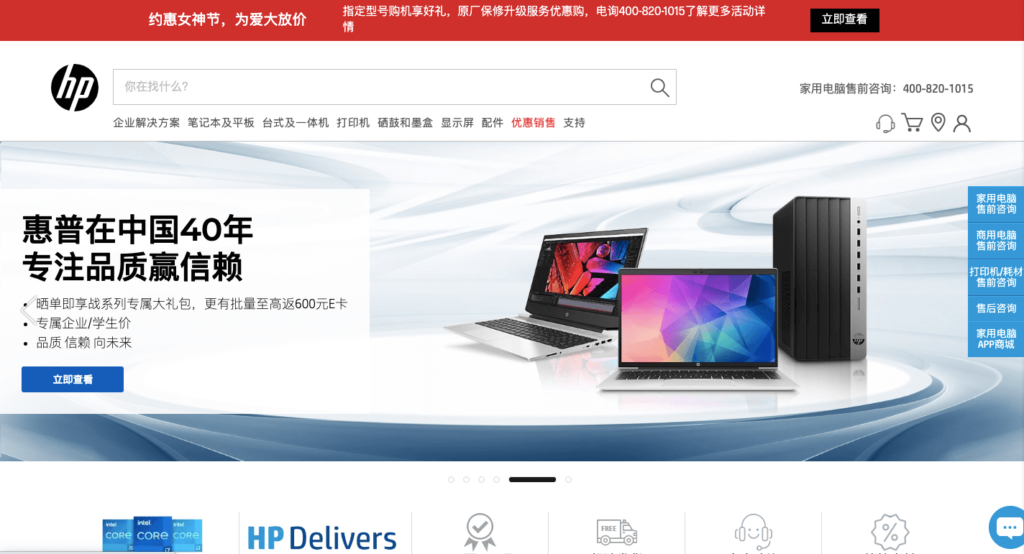
Monthly traffic: about 400,000
HP Inc. is one of the leading manufacturers of personal computers and printing devices globally, and its eCommerce business is thriving. The company launched its first Magento-based online store in Thailand and Indonesia in 2013, and when expanding its business to the Chinese market, they decided to upgrade their platform to Magento Commerce 2 (Adobe Commerce).
Adobe Commerce supports managing multiple stores across different regions, allowing each store to provide a unique local experience to appeal to customers from different eCommerce cultures. HP has delivered over 600 new features and enhancements in more than 130 releases with Adobe Commerce, and after success in the Asia-Pacific region, HP is now using Adobe Commerce to expand its business in 27 more markets. Regional centers provide local requirements, including payment, fulfillment logistics, language, and order management capabilities.
Omnichannel strategy
In addition to the desktop website, HP China's online store has developed a mobile application called "HP Mall" and a corresponding WeChat mini-program. Users can also enter the online store through social media channels such as WeChat official accounts. The plan released by HP in Hong Kong includes purchasing programs for consumers, small businesses, and employees, and integrates with retail store sales systems, allowing customers to visit the website to reserve in-store demonstrations. This has become a key driving factor for HP's "online-to-offline" omnichannel strategy, increasing valuable in-store traffic.
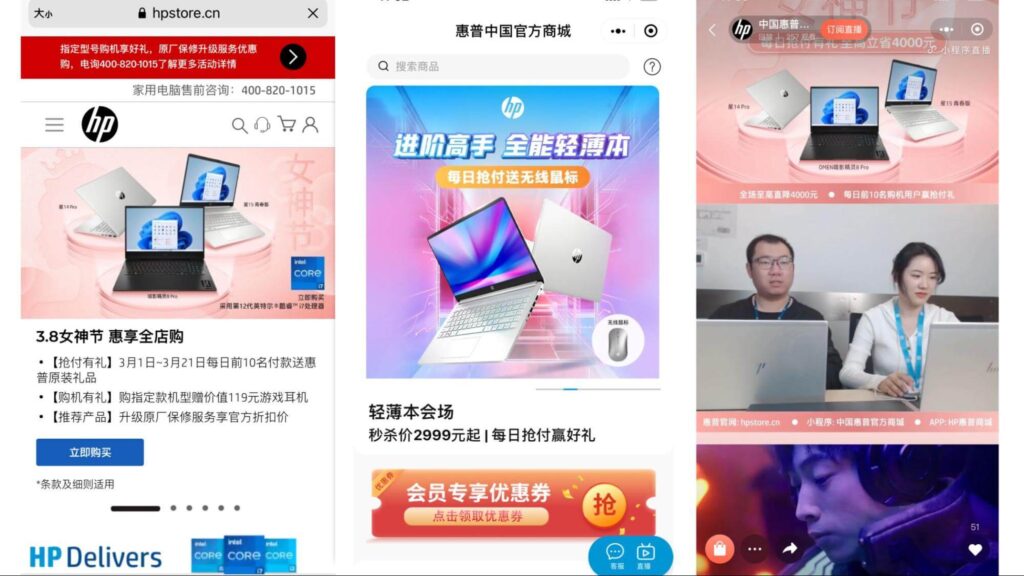
Special Features
- Different consultation entrances are provided for commercial and home products, to follow up on the different needs of individual and corporate customers.
- Support Chinese online customer service and real-time Live Chat.
- Local social login - QQ and Weibo for the website and WeChat login for WeChat mini program.
- Flash sale promotions, coupon wallet.
- Localized payment methods - WeChat and Alipay.
UI/UX Highlights
- A more concise modular page layout, highlighting product images.
- The sticky navigation bar allows users to quickly access key pages.
- A discount zone is added to the menu bar, the menu bar is divided into sections by usage and feature series.
- The floating sidebar provides quick after-sales consultation services.
- An "Explore HP Notebook" landing page is added to showcase the flagship category in detail.
- An "Discount Sales" landing page is added to display localized marketing activities.
3. Omega (Magento 2)
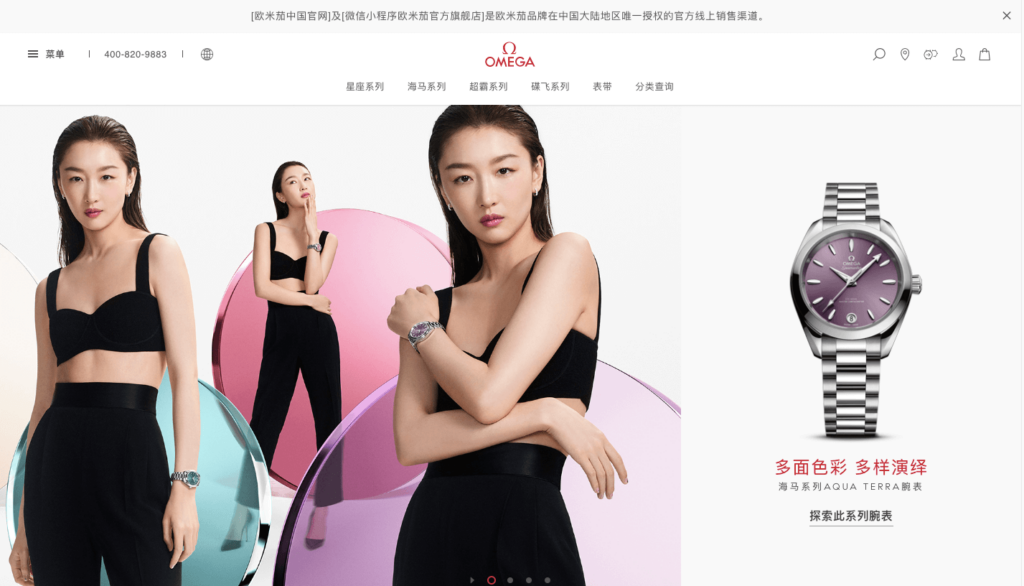
Monthly traffic: about 200,000
Omega is a well-known Swiss luxury brand that specializes in producing high-end watches and jewelry. It has multiple physical stores in China and has developed an online brand store based on Magento 2.
Omnichannel strategy
Aside from the desktop official store, Omega also has a mobile layout to provide a unified shopping experience on multiple screens. There’s also an official WeChat mini-program to broaden their online sales channels, and social media marketing on WeChat official account, Weibo, and RED to enhance their Influence.
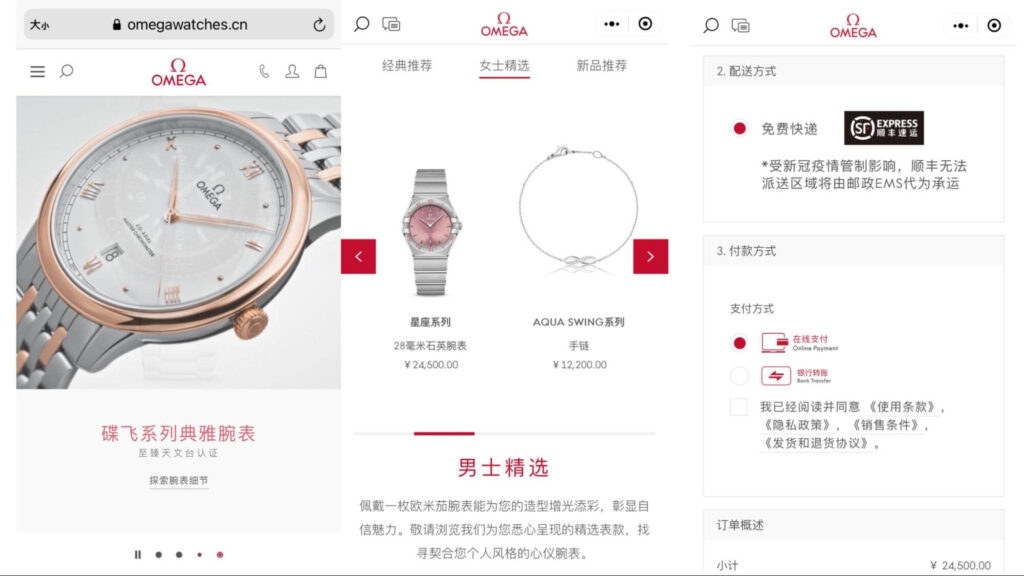
Special Features
- Product Comparison: Users can select 2-4 products to compare various parameters side by side
- Social Login: Quick login via WeChat and phone number
- Local Social Media Marketing: Integration with WeChat, Weibo, and RED
- Express Delivery and Logistics Integration: Using SF Express and China Post EMS
- Payment methods includes online payment (WeChat Pay, Alipay, and Huabei installment) and bank transfer
UI/UX Highlights
- Flexible product display module layout with increased exposure for popular products to improve conversion rates
- Product series introduction module specifically tailored for the Chinese market
4. Dyson(Adobe Commerce)
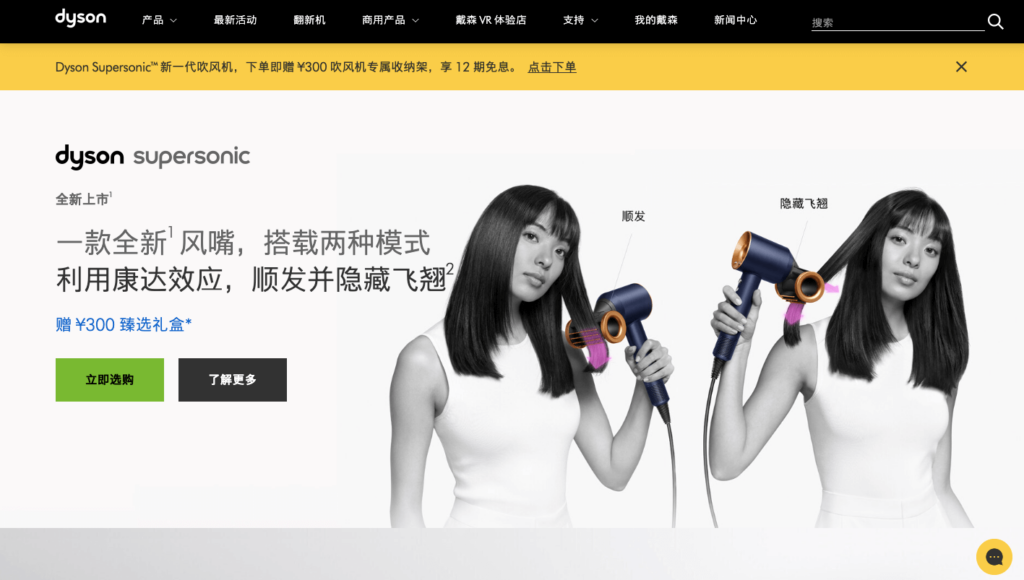
Monthly traffic: about 120,000
Dyson is a British technology company that specializes in researching and producing home appliances. Dyson has established its own official eCommerce platform in China based on Adobe Commerce, offering online purchasing and after-sales services.
Omni-channel strategy
Dyson has built a desktop official store and adapted its content for mobile display, providing a consistent and convenient shopping experience. The Dyson official WeChat mini program combines the online shopping experience with their loyalty program, allowing users to complete tasks and obtain rewards within WeChat. They also offer rich interactive features, such as Q&A communities, customized packaging, etc., allowing users to receive likes, medals, and other rewards, motivating interaction, and long-term consumption.
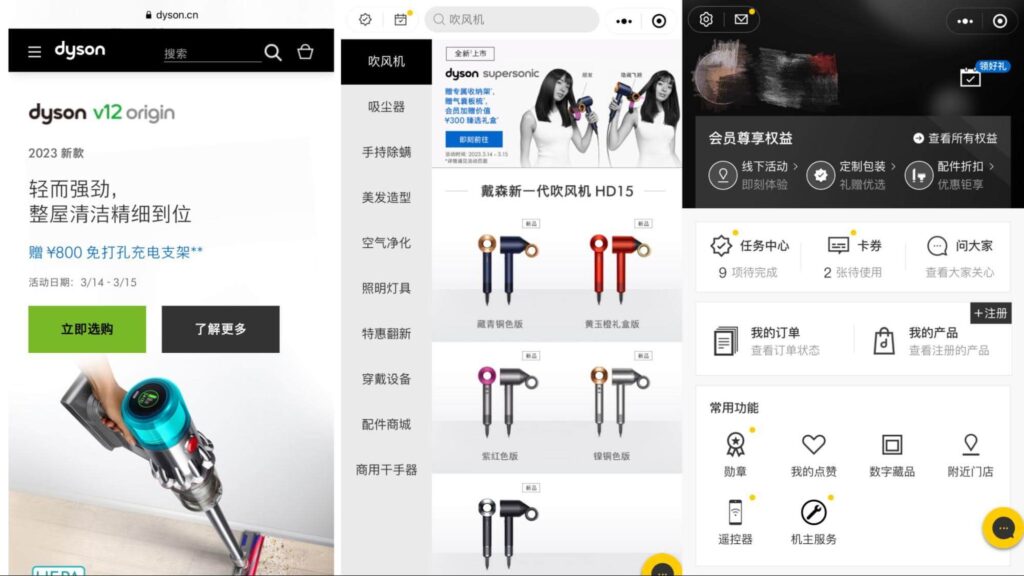
Special Features
- Dyson Online VR Experience Store
- Supports mobile binding and dynamic verification code login
- Chinese online customer service for real-time Q&A
- Localized payment - WeChat, Alipay, and Huabei installment payment
UI/UX Highlights
- More concise page layout, highlighting the visual images of products and enhancing attractiveness
- Navigation bar adds mega menu for clearer guidance of users into secondary pages
- Fixed customer service entrance on the homepage provides users with a more convenient service experience.
5. H&M (Adobe Commerce)
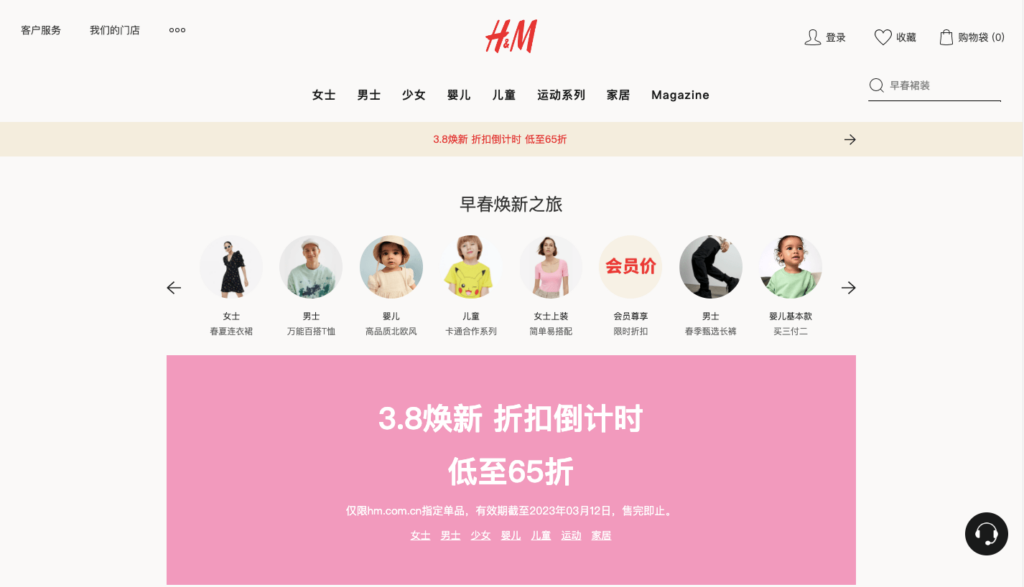
Monthly traffic: about 110,000
H&M is a Swedish fashion brand founded in 1947. Today H&M has become one of the world's well-known fast fashion brands.
In order to expand its influence in the Chinese market, H&M has developed an online store based on Adobe Commerce in China, providing convenient and fast online shopping services. In this online store, consumers can easily browse various fashion products and make payments through various payment gateways such as Alipay, WeChat Pay, UnionPay, etc.
Omni-channel strategy
In addition to the desktop online store, H&M has also developed a mobile application "H&M Online Store" and a corresponding WeChat mini-program. Users can enter the mini-program directly through the WeChat official account entrance to make purchases or enter the membership program to obtain benefits and discounts.
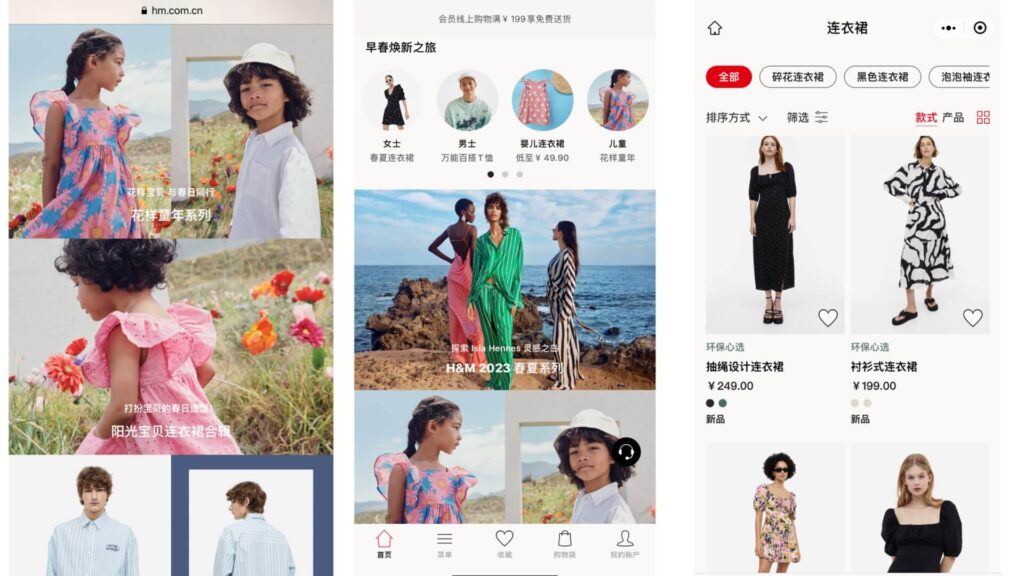
Special features
- "Favorites" function tailored to Chinese consumers' habits
- Integration of multi-channel sales, directing traffic to the H&M official app and WeChat Mini Program
- Support for multiple delivery methods, such as express delivery and in-store pickup
- Promotion page - member-exclusive discounts
- Local social login - WeChat one-click login
- Find nearby stores
- Linking with Chinese social media accounts - WeChat official account, Weibo, RED
- Chinese online customer service, real-time Q&A
UI/UX Highlights
- A floating online chat button provides users with instant support
- Visual product categorization navigation is added to help users browse the desired categories.
- The use of a more vibrant main visual and product images increases users’ desire to purchase.
6. Southco(Adobe Commerce)
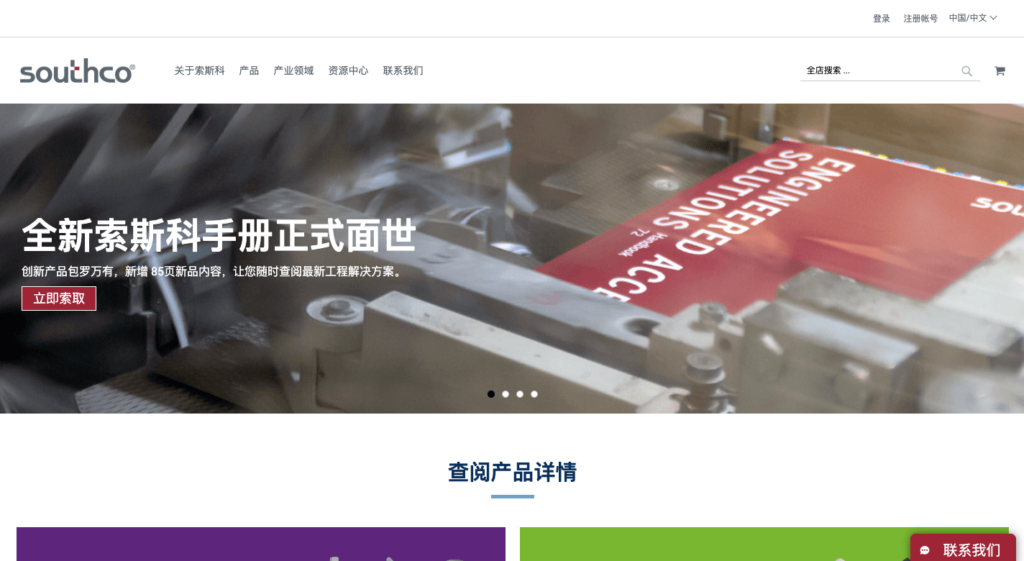
Monthly average traffic: about 100,000
Southco is a global leader in the manufacturing of mechanical locks and locking systems, headquartered in Pennsylvania, USA. In order to meet the needs of the Chinese market, Southco has developed a B2B online store based on Adobe Commerce, showcasing products as well as supporting solutions and services. It offers a comprehensive product catalog with detailed introduction for each item, also enterprise users can submit specific requirements and request quotes through their accounts.
Key features
Supports online requests for quotes and bulk submission of product requirements, including "estimated annual usage," to meet the needs of B2B customers.
UI/UX Highlights
A separate "Distributor Resource Center" entrance has been set up for the Asia-Pacific region, making it easier for users in different regions to quickly find the corresponding resource center.
7. Pantone (Magento 2)
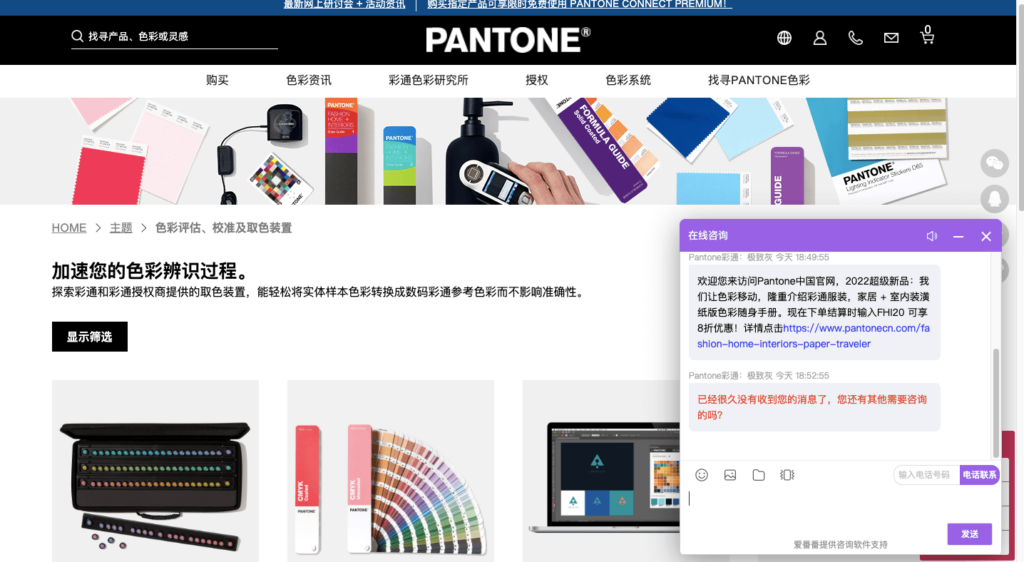
Monthly traffic: about 30,000.
Pantone is a globally renowned color system provider, and the color system offered by the company is widely used in various industries. To meet the demand for color systems in the Chinese market, Pantone has developed an online store based on Magento 2, providing solutions for global color standardization and related services. The store offers an online color evaluation tool, which enables consumers to quickly measure and determine the required color standards.
Key features
- Visual color display that allows consumers to preview the effects and applications of various color products on the website.
- Convenient shopping cart and order management function that allows consumers to check their order status and history at any time.
- Accessible customer service and technical support, which allows consumers to obtain timely assistance and answers through real-time chat, phone calls, email, and other channels.
- Local payment methods - WeChat Pay and Alipay.
- WeChat login and integration with local social media like Weibo.
- Local logistics integration: SF Express.
UI/UX features
- The navigation bar uses a double-layer layout, which more clearly displays the functional entry area.
- The Mega menu adds a "Buy all Pantone products" button, which is an effective call-to-action phrase that encourages purchases.
- The colorful and unified image visual style highlights the brand's characteristics.
- The introduction of video elements in the banner enhances interactivity and interest.
- The fixed "Online Consultation" entry on the homepage helps users obtain product information and after-sales service effectively.
8. HELLEN&WOODY (Magento 2)
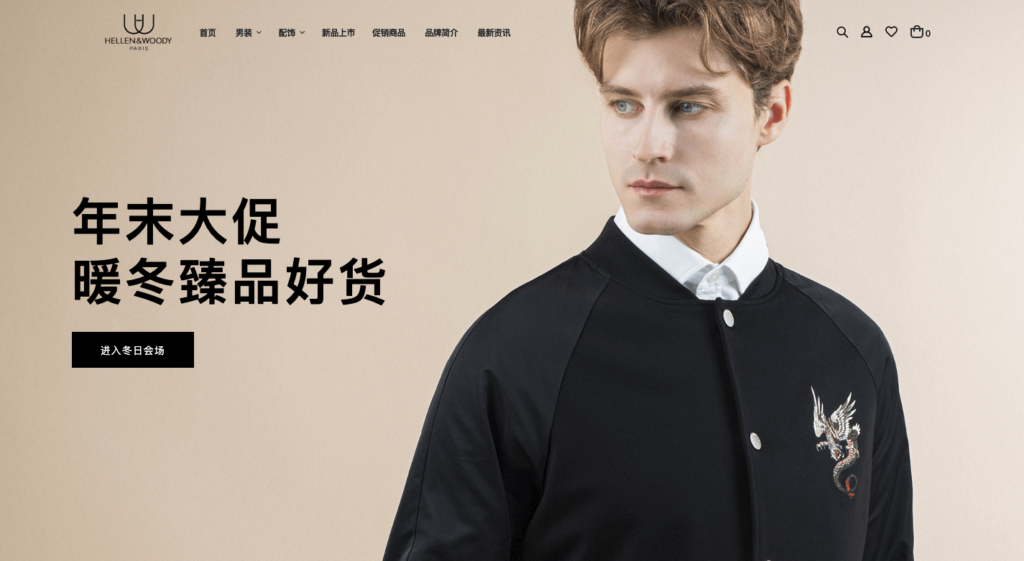
HELLEN&WOODY is a designer brand for men's luxury casual clothing, founded in France in 2013. The brand upholds an elegant lifestyle attitude, constantly pursuing quality.
In China, HELLEN&WOODY has launched its online store, offering various payment methods and secure logistics delivery services to ensure the safety and convenience of customers' shopping experiences. At the same time, the online store of HELLEN&WOODY also regularly launches promotional activities and new product releases, such as seasonal "winter venues." The store has features such as favorites and shopping cart functions commonly used by Chinese consumers and is linked to its Tmall, JD flagship stores, and international site, allowing customers to purchase the latest HELLEN&WOODY products through multiple channels.
9. Adooq Bioscience (Magento)
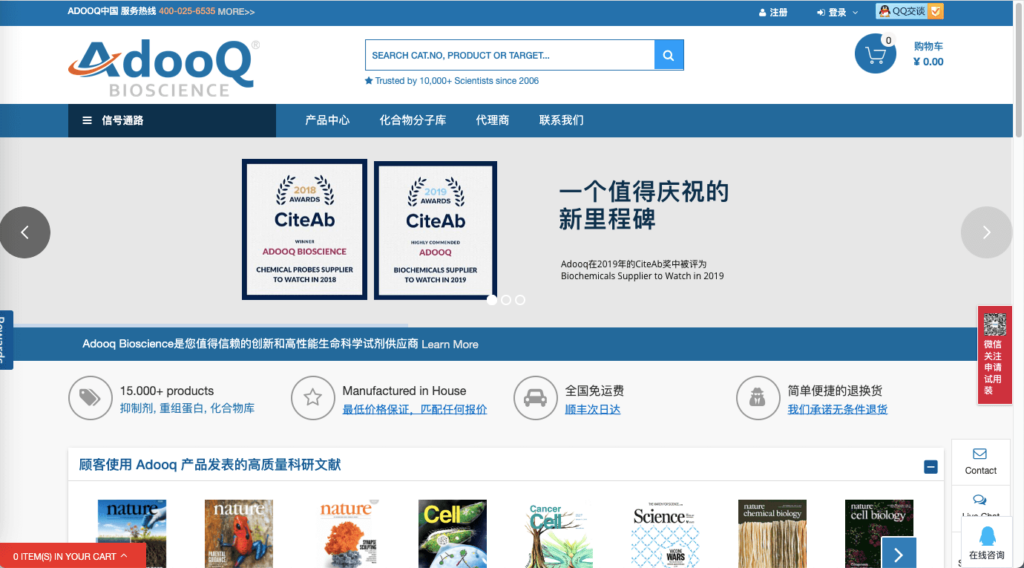
Adooq is a biotechnology company based in the United States that provides chemical reagents and laboratory equipment for the biotechnology and drug research fields.
For the Chinese market, Adooq has developed an online store based on Magento, providing a detailed product catalog and descriptions. Users can add products to their favorite list or add them to the shopping cart for purchase. The store also supports applying for free trials and discount codes. Enterprise users can request bulk packaging quotes based on the product catalog.
In addition to providing online customer service, the store is integrated with QQ, local social media platforms. The website offers local logistics, nationwide free shipping, SF Express next-day delivery, and a 365-day unconditional and convenient return policy to provide the best shopping experience for users.
10. Giuseppe Zanotti (Magento 2)
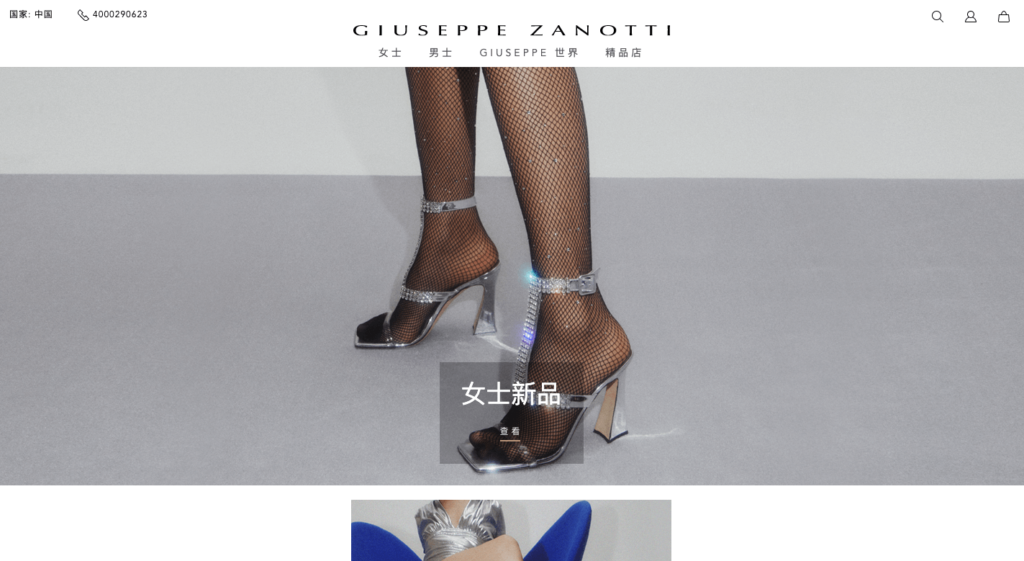
Giuseppe Zanotti is a famous Italian fashion footwear designer whose unique design style combines traditional craftsmanship and modern technology. His clientele includes many celebrities such as Rihanna.
The Giuseppe Zanotti Chinese brand store uses large banners to showcase product design details and has a simple and atmospheric page layout. The homepage uses nearly full-screen video effects to showcase the details of the handmade design process of the brand's products, attracting consumers to make purchases. The website provides a shopping process that meets the habits of Chinese consumers, supporting phone verification code registration, creating wish lists, tracking order information, convenient returns, and installment payments with Huabei. As a fashion brand, Giuseppe Zanotti has also established a local social media matrix to drive traffic, with the store linked to WeChat official accounts, Red, and Weibo.
We hope this article has been helpful to you. TMO is an Adobe-certified solution partner, providing professional Adobe Commerce (Magento) implementation services with rich experience in local projects. If you have e-commerce platform development needs or want to learn about our services, please feel free to contact us!
Our successful cases include:
- Feidekai (Fitline)Feidekai's B2B2C “New Retail” eCommerce platform offers Store Management & Procurement for its dealers, and a Marketplace for end users in the Chinese market.Feidekai: Custom B2B2C “new retail” eCommerce platform
- Henry ScheinHenry Schein streamlines B2B purchases with automatic order fulfillment that integrates into systems like ERP for a modern B2B experience across platforms.Henry Schein: B2B eCommerce platform for the world’s largest distributor of dental equipment and supplies.


